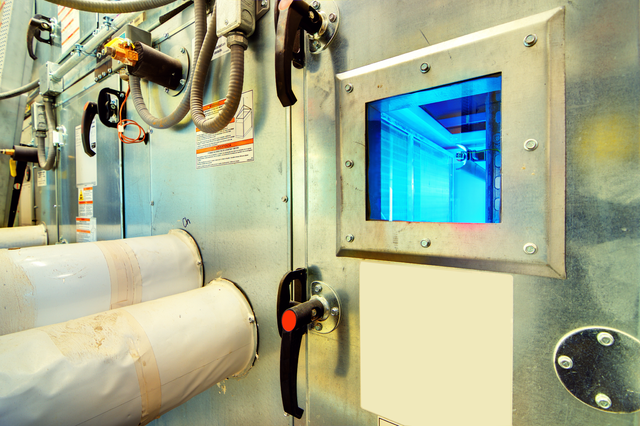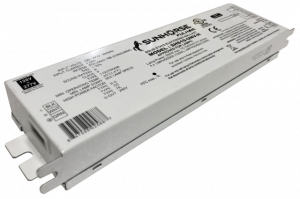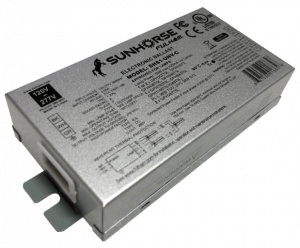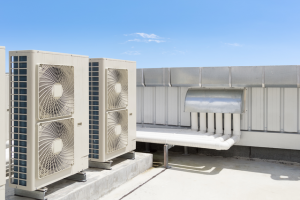
Germicidal UV Guide
Long before the pandemic and COVID-19, and well before Germicidal UV (ultraviolet) lighting was considered quite as essential as it is now for the mainstream population’s everyday health, well-being and survival, Fulham had developed its SunHorse Germicidal UV light ballast program as a niche lighting specialty area.
Multitudes of SunHorse ballast models have been useful over the past two decades in optimally operating UV lamps inside OEMs’ purification and sterilization equipment for best light output and lamp longevity.
Applications had normally come in the form of lighting equipment used in air ducts or chambers, in HVAC units, in water purification or sewage treatment systems, or in free-standing UV lighting equipment.
Granted, these systems have always served an important purpose; with the pandemic, however, they have also been deemed even more essential / no longer niche.
(Incidentally, Fulham SunHorse ballasts have also been used for many years in tanning beds to power UV light tanning lamps most efficiently and for best performance. Although this application has lessened in popularity across time, it did help Fulham to establish greater expertise and experience with this technology – a far cry from that of any new market entrant who may be trying to cash in specifically in response to today’s challenges.)


Fast forward to our current reality with COVID-19, and we find that more and more equipment is being developed for commercial, hospitality, municipal, educational and residential lighting purposes – or anyplace the general public convenes in medium to large groups – whose everyday function is to help address either surface, air or water purification, sanitation or sterilization in some manner by using UV light radiation.
Our decades-long, deep expertise in this ultraviolet lighting optimization area of the market, with our SunHorse program, has truly allowed Fulham to contribute to society’s safety and recovery effort in a meaningful and rapid way.
“Be sure it’s pure” was an informal sales slogan associated recently with the kind of optimal performance that SunHorse ballasts bring to operation of Ultraviolet Germicidal lamps in fixtures or purification systems, particularly those developed to safeguard against the virus that causes COVID-19 (but which also work to sterilize or disinfect against other viruses, too, aside from sars cov 2).
Essentially, SunHorse ballasts are utilized in fixtures that power special Germicidal UV C tube lamps. These lamps cast UV light radiation throughout a room or space or air duct, etc., which deactivates sars cov 2 and other viruses, kills mites, kills parasites, etc. These kinds of ultraviolet light in germicidal lamps are designed to address these threats in the air, in water or on hard surfaces.
SunHorse ballasts have aptly become part of Fulham’s ESSENTIAL PRODUCTS initiative during the pandemic, since attributes of the product line directly assist inside OEM products that attack sars cov 2. Incidentally, other Fulham ESSENTIAL categories include IceHorse refrigeration ballasts (used for lighting within freezers and refrigeration cases for food, medicine and vaccines), FireHorse and HotSpot Emergency Solutions, and FarmHorse horticulture modules that begin to help address the agriculture issues that humanity will be facings as our global population continues to grow (and our climate continues to change).
Our lines of SunHorse items include an ample assortment of dimming and non-dimmable items. Popular attributes include:
1) 30% Less Energy Use Than Traditional Magnetic Ballasts;
2) Constant UV Output that Eliminates a Buck/Boost Transformer;
3) Draws 25% Less Current Than Magnetic Ballasts;
4) Extended Lamp Life Reduces Maintenance Costs;
5) Quiet Operation;
6) Low Radiant Heat Reduces Air Conditioning Costs;
7) Lighter Weight Ballasts Than Magnetic Ballasts;
8) Dimming models feature Instant Start with 0-10V dimming control and linear (smooth) dimming from 100-70%;
9) Multi-lamp Operation where, depending on the model, up to six lamps can be run off of a single ballast;
10) The extended lamp life that these ballasts promote lowers maintenance costs/relamping costs; and
11) Compatibility with a wide range of ultraviolet (UV) lamp types, configurations and brands. (There are 29 documented ways to wire our various ultraviolet germicidal ballast models, as documented in our literature online.)

What is the ultraviolet germicidal lamps radiation that Fulham’s SunHorse ballasts succeed in optimizing?
Ultraviolet radiation is a portion of the electromagnetic spectrum between visible light and X-Rays (and that we cannot see with the naked eye). The sun produces three main kinds of ultraviolet light radiation: UVA, UV B and UV C.
The first two make it through the Earth’s atmosphere (which we often block from our eyes with coatings on sunglasses, for instance), however, the UV C waves (the shortest of the three wavelengths) get blocked out by the ozone layer.
Unlike UV A and UV B, the only way that the highest-energy UV C portion of the UV spectrum is present on Earth is via an artificial light source, such as luminaires made by Fulham’s SunHorse customers, and also via lasers, incidentally.
Skin or eye exposure to UV C lighting is damaging to humans and animals, so most Germicidal UV C luminaires have either a UV C lighting indicator light that tells when the fixture is ON, or have auto-shutoff sensor capability built-in, to be sure nobody is exposed to the UV C light.
Now let’s take a step back and make sure that everyone is tracking with what is meant by all these lighting terms.
“Germicidal UV lighting,” or “germicidal lighting,” or “germicidal ultraviolet lighting,” or “germicidal ultraviolet light radiation” or “Germicidal UVC” or “Germicidal UV C” or “Germicidal UV-C” are all synonymous expressions describing the use of UV C ultraviolet light tubes or “lamps” within germicidal UV C light fixtures, otherwise known as luminaires, in order to address some type of environmental condition which requires sterilization, purification, or disinfection. The lighting can be used within a room where the light disinfects any particles that are in the air as the light passes through it.
The Germicidal UV C lighting can also be used in systems that are designed to treat water or kill germs inside of water, where the light hits the water as it passes through the system. This can either be for some kind of filtration system or it could be for sewage treatment, and so on.
And thirdly, and the light can be used for surface disinfection applications, where if there were germs on a surface, the lighting hitting the surface could deactivate or kill that virus that causes illnesses and germs. Germicidal UVC lighting is damaging to human skin and eyes (and animals and their eyes).
It also degrades some materials over time based on its intensity. So use for surface disinfection is only ideal on certain types of surfaces that don’t contain any organic material or colors that can fade.
UVC light radiation is not visible, so this creates an additional hazard using it in a light fixture. It encourages manufacturers of germicidal ultraviolet UVC light fixtures to build features into their luminaires for safety. This can include motion sensors that automatically shut off a UV C fixture, or it could include an indicator light that tells a room occupant when the UVC light is on, or both.
In theory, rather than a motion sensor, it could also or instead contain a heat sensor to see if any living occupants are in the room, for auto shut off.
Quality Assurance
Fulham has often touted its quality with the phrase “Quality is our most important product.” We have been in business for over 25 years as a stateside company that stands by its products. This makes a huge difference in establishing the value of our warranty, as warranties are NOT all created equal. It is very difficult to enforce a foreign company’s warranty if deciding to buy directly from an unknown overseas source (who often times may not take responsibility for issues, who operate in a different time zone & in a different language, and who you only have an email address for, i.e. “remember: you get what you pay for.”
Financial Benefits of HVAC usage of Germicidal UVC lighting
Particularly during these trying pandemic times – where facilities are attempting to be as comprehensive as possible in their coverage of all the air in their spaces – utilization of Germicidal UV C light in an HVAC system is a cost-efficient approach. It may rival addressing contaminants in the air on a room-to-room basis with individual GUV fixtures.
Not only does this UV radiation address pathogens or other microorganisms that could normally thrive in an HVAC system, it can also eliminate the buildup of material on the system’s drainage pipes, cooling coils and ducts.



